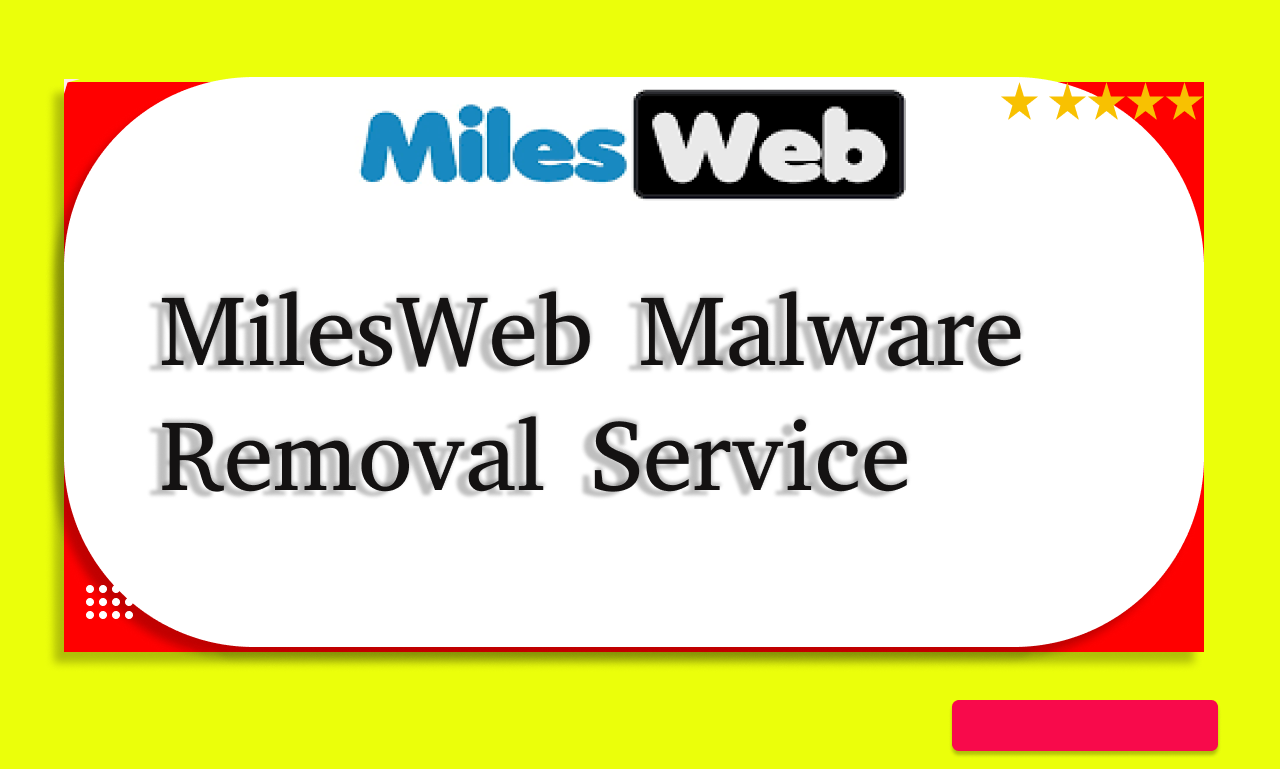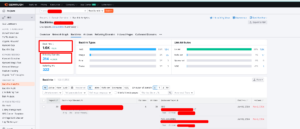Description
Discover peace of mind with WpPiP’s guaranteed MilesWeb Malware Removal Service. Our dedicated team swiftly eliminates malware, safeguarding your MilesWeb-hosted website. Trust WpPiP for reliable solutions tailored to your MilesWeb hosting needs.
Secure Your MilesWeb Hosting: Expert MilesWeb Malware Removal with WpPiP
At WpPiP, we understand the importance of a secure website. With MilesWeb hosting, you get a reliable platform for your online presence. But even the best hosting can’t guarantee complete immunity from malware threats.
That’s where WpPiP comes in! We specialize in expert MilesWeb malware removal services, ensuring your website stays safe and secure.
Here’s how WpPiP can help:
- In-depth Malware Scanning: We use advanced tools to thoroughly scan your MilesWeb hosted website for hidden malware, including viruses, worms, and trojan horses.
- Expert Malware Removal: Our experienced technicians will safely remove any detected malware from your website, minimizing damage and preventing further attacks.
- Website Security Hardening: We’ll identify and address any vulnerabilities in your MilesWeb hosting configuration, making it more resistant to future malware attacks.
- 24/7 Peace of Mind: With WpPiP’s ongoing monitoring and support, you can rest assured that your MilesWeb website is always protected.
MilesWeb Malware Issue and Removal
Is your MilesWeb hosted website experiencing a sudden drop in traffic or displaying strange warnings? These could be signs of a malware infection. WpPiP offers expert MilesWeb malware removal. Our team will meticulously scan your site, safely eliminate any threats, and harden your defenses to prevent future attacks. Don’t wait! Contact WpPiP today and ensure your MilesWeb website stays secure.
Why Choose WpPiP for MilesWeb Malware Removal?
- Proven Expertise: We have a proven track record of successfully removing malware from MilesWeb hosted websites.
- Fast and Efficient Service: We understand the urgency of a malware attack. Our team will work quickly and efficiently to get your website back online safely.
- Affordable Solutions: We offer competitive pricing for our MilesWeb malware removal services.
- Commitment to Security: We are dedicated to keeping your website secure and protected from future threats.
Some MilesWeb website malware that we can remove:
1. Backdoors: Hidden code that grants unauthorized access to a website’s files and systems. 2. Code Injection: Malicious code inserted into legitimate website code, often to steal data or redirect traffic. 3. Cross-Site Scripting (XSS): Exploiting vulnerabilities to inject malicious scripts into webpages, affecting user interaction. 4. Cross-Site Request Forgery (CSRF): Tricking a user’s browser into performing unauthorized actions on a trusted website. 5. Defacement: Malicious modification of a website’s content, often with a message or propaganda. 6. Drive-by Downloads: Malicious code automatically downloads malware onto visitor’s devices when they access the website. 7. Exploit Kits: Pre-built tools that automate attacks by finding and exploiting website vulnerabilities. 8. Fileless Malware: Malware that doesn’t rely on traditional files, making it harder to detect. 9. Formjacking: Stealing user information submitted through website forms, like login credentials or credit card details. 10. Hidden Malware: Malicious code disguised as legitimate content, making it difficult to identify. 11. Injections (SQL, LDAP): Injecting malicious code into databases to manipulate or steal data. 12. Iframe Hijacking: Replacing website content with an iframe displaying malicious content. 13. Malvertising: Malicious advertisements that redirect users to phishing sites or download malware. 14. Mobile Malware: Malware specifically targeting mobile devices accessing websites. 15. Phishing: Creating fake login pages or websites to steal user credentials. 16. Ransomware: Blocking access to a website or its data and demanding payment for its release. 17. Remote Access Trojans (RATs): Tools allowing attackers to control infected devices remotely. 18. SEO Spam: Injecting spam keywords to manipulate search engine rankings for the website. 19. Session Hijacking: Stealing a user’s session ID to impersonate them and access their account. 20. Skimming: Stealing credit card information during online transactions. 21. Social Engineering Attacks: Manipulating users into taking actions that compromise website security. 22. Spam Bots: Automated programs that spam message boards or comment sections on a website. 23. Spyware: Software that gathers information about users’ activity without their consent. 24. Steganography: Hiding malware within seemingly harmless files like images or videos. 25. Trojan Horses: Programs that appear legitimate but contain hidden malicious functionalities. 26. URL Redirects: Malicious redirects take users to phishing sites or malware download pages. 27. Watering Hole Attacks: Targeting websites frequented by a specific group of users to infect their devices. 28. Web Bugs: Tiny images embedded in websites to track user activity without their knowledge. 29. Website Backups: Malware that backs up a website’s data for future attacks or data theft. 30. Worms: Self-replicating malware that spreads across websites within a network. 31. Web Shell Uploads: These scripts grant attackers remote access to your website. 32. Defacement Attacks: Hackers alter your website’s appearance with their content. 33. Cryptojacking Malware: Uses your website’s visitors’ processing power to mine cryptocurrency. 34. Backdoor Malware: This creates a hidden entry point for attackers to regain access to your website. 35. SQL Injection Attacks: Exploiting vulnerabilities to inject malicious code into your website’s database. 36. Brute-force Login Attempts: Automated attempts to guess your login credentials. 37. Watering Hole Attacks (Targeted): Targeting websites frequented by a specific user group with malware relevant to their interests or industry. 38. SEO Black Hat Techniques: Unethical methods to improve search engine rankings, often harming user experience. 39. Malicious SEO Redirects: Redirects to spammy or irrelevant content to manipulate search rankings. 4o. Traffic Bots: Malicious bots that generate fake website traffic to inflate metrics or manipulate analytics.
Don’t let malware slow down your website or damage your reputation. Contact us today for expert MilesWeb malware removal services!











Reviews
There are no reviews yet.